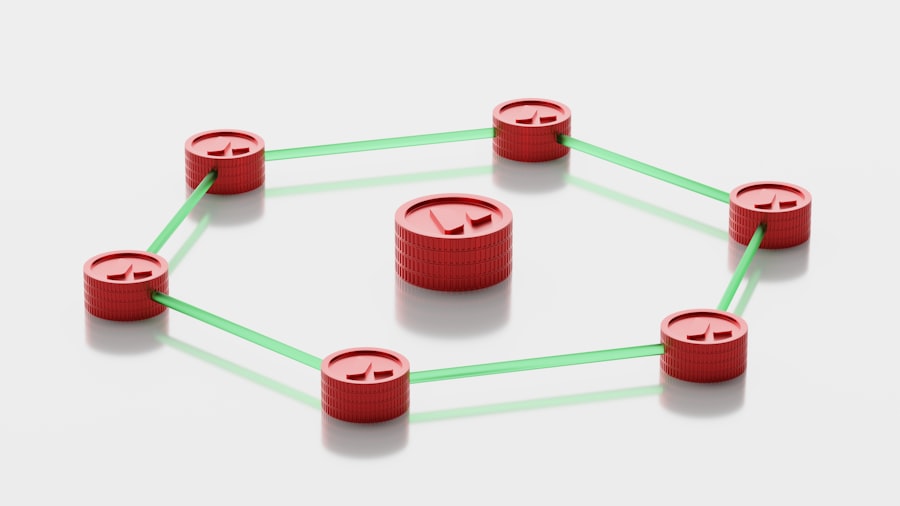The landscape of cybersecurity has undergone a significant transformation over the past few decades, evolving from traditional perimeter-based security models to more sophisticated frameworks like Zero-Trust Architecture (ZTA). In the early days of network security, organizations relied heavily on firewalls and intrusion detection systems to create a secure perimeter around their networks. This approach was predicated on the assumption that threats primarily originated from outside the organization, leading to a false sense of security.
As long as users and devices were inside the perimeter, they were considered trustworthy, which left organizations vulnerable to insider threats and advanced persistent threats (APTs) that could bypass perimeter defenses. As technology advanced and the nature of work evolved, particularly with the rise of remote work and cloud computing, the limitations of perimeter-based security became increasingly apparent. The proliferation of mobile devices, the Internet of Things (IoT), and the shift to cloud services blurred the lines of traditional network boundaries.
Cybercriminals began exploiting these vulnerabilities, leading to high-profile breaches that exposed sensitive data and undermined trust in organizational security. This shift necessitated a new approach—one that recognized that threats could come from anywhere, including within the organization itself. Thus, the concept of Zero-Trust Architecture emerged, emphasizing the need for continuous verification and a “never trust, always verify” mindset.
Understanding Zero-Trust Architecture: Principles and Key Components
Zero-Trust Architecture is built on several foundational principles that redefine how organizations approach security. At its core, ZTA operates on the premise that no user or device should be trusted by default, regardless of their location within or outside the network. This principle is crucial in a world where cyber threats are increasingly sophisticated and can originate from various sources.
To implement ZTA effectively, organizations must adopt a comprehensive strategy that includes identity verification, least privilege access, and micro-segmentation. Identity verification is a cornerstone of Zero-Trust Architecture. Organizations must ensure that every user and device attempting to access resources is authenticated and authorized.
This often involves multi-factor authentication (MFA), which adds an additional layer of security by requiring users to provide multiple forms of identification before gaining access. Furthermore, ZTA emphasizes the principle of least privilege access, meaning users should only have access to the resources necessary for their roles. This minimizes the potential damage caused by compromised accounts or insider threats.
Micro-segmentation further enhances security by dividing networks into smaller segments, making it more difficult for attackers to move laterally within the network once they gain access.
The Benefits of Implementing Zero-Trust Architecture for Businesses

Implementing Zero-Trust Architecture offers numerous benefits for businesses seeking to enhance their cybersecurity posture. One of the most significant advantages is improved risk management. By continuously verifying user identities and limiting access based on specific roles, organizations can significantly reduce their attack surface.
This proactive approach helps mitigate risks associated with data breaches and insider threats, ultimately protecting sensitive information and maintaining customer trust. Another key benefit of ZTA is its adaptability to modern work environments. As businesses increasingly embrace remote work and cloud services, traditional security models struggle to keep pace with the dynamic nature of these environments.
Zero-Trust Architecture is inherently designed to accommodate this shift, allowing organizations to secure their resources regardless of where users are located or how they connect to the network. This flexibility not only enhances security but also supports business continuity by enabling employees to work securely from anywhere.
Overcoming Challenges in Adopting Zero-Trust Architecture
| Challenges | Metrics |
|---|---|
| Complexity of Implementation | Percentage of IT staff trained in zero-trust principles |
| User Resistance | Number of user complaints or resistance incidents |
| Integration with Legacy Systems | Percentage of legacy systems successfully integrated |
| Cost of Implementation | Total cost of zero-trust implementation compared to budget |
| Effectiveness in Threat Detection | Number of successful threat detections after implementation |
While the benefits of Zero-Trust Architecture are compelling, organizations often face challenges when adopting this model. One significant hurdle is the complexity involved in implementing ZTA across existing infrastructure. Many organizations have legacy systems that may not be compatible with modern security protocols, making it difficult to achieve a seamless transition to a Zero-Trust framework.
Additionally, integrating various security tools and technologies can create operational challenges and require substantial investment in time and resources. Another challenge lies in cultural resistance within organizations. Employees accustomed to traditional security models may be hesitant to embrace a Zero-Trust approach, viewing it as an inconvenience rather than a necessary evolution in security practices.
To overcome this resistance, organizations must prioritize education and training initiatives that emphasize the importance of ZTA in safeguarding sensitive data and maintaining business integrity. By fostering a culture of security awareness and collaboration, organizations can facilitate a smoother transition to a Zero-Trust Architecture.
Zero-Trust Architecture in Action: Real-World Examples and Case Studies
Numerous organizations across various industries have successfully implemented Zero-Trust Architecture, demonstrating its effectiveness in enhancing cybersecurity. For instance, Google’s BeyondCorp initiative is a prime example of ZTA in action. By adopting a Zero-Trust model, Google enabled its employees to securely access applications from any device or location without relying on traditional VPNs.
This approach not only improved user experience but also strengthened security by ensuring that all access requests were continuously verified. Another notable case is that of Microsoft, which has integrated Zero-Trust principles into its Azure cloud services. By leveraging identity protection tools and conditional access policies, Microsoft has created a robust security framework that protects its cloud infrastructure while allowing customers to manage their own security postures effectively.
These real-world examples illustrate how organizations can leverage Zero-Trust Architecture to enhance their security measures while adapting to modern technological demands.
The Role of Zero-Trust Architecture in Safeguarding Against Cyber Threats

In an era marked by escalating cyber threats, Zero-Trust Architecture plays a critical role in safeguarding organizations against potential attacks. Cybercriminals are constantly evolving their tactics, employing sophisticated techniques such as phishing, ransomware, and social engineering to exploit vulnerabilities within networks. By adopting a Zero-Trust approach, organizations can significantly bolster their defenses against these threats.
One of the key advantages of ZTA is its ability to limit lateral movement within networks. In traditional security models, once an attacker gains access to a network, they can often move freely between systems and applications. However, with micro-segmentation and strict access controls inherent in Zero-Trust Architecture, even if an attacker breaches one segment of the network, their ability to navigate further is severely restricted.
This containment strategy minimizes potential damage and allows organizations to respond more effectively to incidents.
Best Practices for Implementing Zero-Trust Architecture in Business Environments
To successfully implement Zero-Trust Architecture within business environments, organizations should adhere to several best practices that facilitate a smooth transition while maximizing security benefits. First and foremost, conducting a thorough assessment of existing infrastructure is essential. Organizations must identify critical assets, evaluate current security measures, and determine areas that require enhancement or modification to align with ZTA principles.
Another best practice involves prioritizing user education and training programs. Employees should be made aware of the importance of cybersecurity and how their actions can impact organizational security. Regular training sessions can help instill a culture of vigilance and responsibility among staff members, ensuring they understand the significance of adhering to Zero-Trust protocols.
Additionally, organizations should invest in robust identity management solutions that support multi-factor authentication and continuous monitoring of user behavior. By leveraging advanced analytics and machine learning technologies, businesses can detect anomalies in user activity that may indicate potential threats or breaches.
The Future of Security: Embracing Zero-Trust Architecture for Long-Term Success
As cyber threats continue to evolve in complexity and scale, embracing Zero-Trust Architecture will be crucial for organizations seeking long-term success in cybersecurity. The shift towards remote work and cloud-based services has fundamentally changed how businesses operate, necessitating a reevaluation of traditional security models. By adopting ZTA principles, organizations can create a resilient security framework that adapts to emerging threats while safeguarding sensitive data.
Looking ahead, it is likely that Zero-Trust Architecture will become increasingly integrated with emerging technologies such as artificial intelligence (AI) and machine learning (ML). These technologies can enhance threat detection capabilities by analyzing vast amounts of data in real-time, identifying patterns indicative of potential attacks before they escalate into significant breaches. As organizations continue to navigate an ever-changing threat landscape, embracing Zero-Trust Architecture will not only enhance their security posture but also position them for success in an increasingly digital world.
FAQs
What is Zero-Trust Architecture?
Zero-Trust Architecture is a security concept based on the principle of “never trust, always verify.” It assumes that threats exist both inside and outside the network, and aims to secure every access point and prevent unauthorized access.
How does Zero-Trust Architecture work?
Zero-Trust Architecture works by continuously verifying the identity and security posture of every user and device trying to access the network. It uses strict access controls, multi-factor authentication, and micro-segmentation to limit the access that each user or device has.
What are the benefits of Zero-Trust Architecture for businesses?
Zero-Trust Architecture helps businesses improve their security posture by reducing the risk of data breaches and insider threats. It also enables better visibility and control over network traffic, and can help organizations comply with data protection regulations.
Is Zero-Trust Architecture suitable for all businesses?
Zero-Trust Architecture can be implemented by businesses of all sizes and across various industries. However, the level of implementation and the specific tools and technologies used may vary based on the organization’s size, complexity, and security requirements.
What are the challenges of implementing Zero-Trust Architecture?
Challenges of implementing Zero-Trust Architecture include the complexity of managing access controls and policies, the need for robust identity and access management solutions, and potential resistance from users accustomed to more open network access. Additionally, the cost of implementing and maintaining Zero-Trust Architecture can be a challenge for some businesses.



